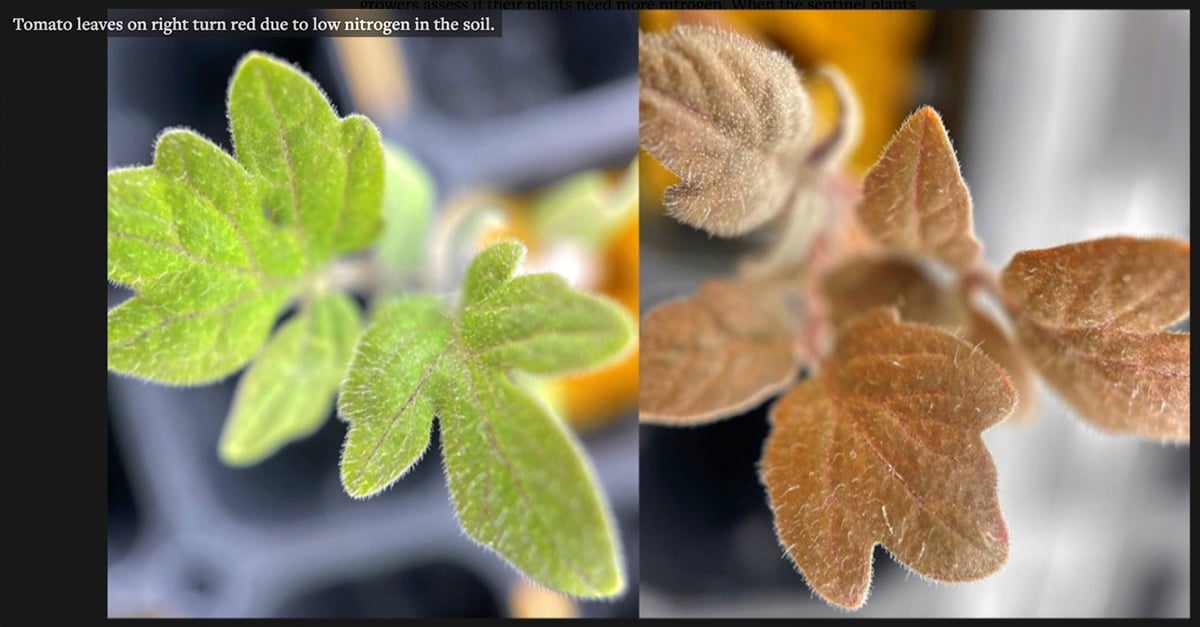Although they don’t know how it happens, researchers with the U.S. Department of Agriculture have determined that oat grains contain five to 20 times more avenanthramides if the crop is exposed to crown rust.
Oats are the only food crop known to produce avenanthramides (Avns), an antioxidant that combats cardiovascular conditions such as atherosclerosis.
Establishing the correlation between crown rust pressure and Avns is helpful, but more work is needed to understand what happens, said Mitchell Wise, a chemist at the USDA’s Cereal Crops Research Unit in Madison, Wisconsin.
Read Also

American researchers design a tomato plant that talks
Two students at Cornell University have devised a faster way to detect if garden plants and agricultural crops have a sufficient supply of nitrogen.
“We don’t know what triggers the avenanthramides production in the grain … that’s one of things I’m interested in finding out,” said Wise, lead author of the study published in Cereal Chemistry.
Wise said the oat plant produces a high level of Avns in its leaves when the crown rust fungus infects the foliage, similar to the human body producing antibodies to fight off a virus.
“The difference is that plants don’t make antibodies … But they do produce secondary metabolites (like Avns) that are a biochemical immune response,” he said.
What’s not understood is how the increased amount of Avns in the leaves produces higher concentrations of the antioxidant in the oat grain.
“We’re not sure if they’re being made in the grain or if they’re being transported into the grain,” said Doug Doehlert, an oat breeder at North Dakota State University and co-author of the study.
Doehlert was the catalyst for the research into crown rust and Avns. He was baffled by data showing that oats produced little or no Avns when grown in arid climates.
After a period of lobbying, he convinced Wise to compare oats from the arid, western half of North Dakota to oats grown in the Red River Valley.
In 2005 and 2006, Doehlert grew oats in North Dakota near Williston and Fargo. After harvesting and testing the crops, the researchers found that Doehlert was right.
“Up to 20 times (more Avns),” were found in the oats grown at Fargo, Doehlert said.
Overall, the 16 oat cultivars grown in Williston produced, on average, five milligrams of Avns per kg of oat flour. The same cultivars grown at Fargo in 2005, a wet year with crown rust pressure, produced 29 mg per kg of flour.
Doehlert also found oats grown at Fargo in 2006 produced almost no Avns.
“The second year in Fargo was a dry year … and that year we had three mg (of Avns) in Fargo. That’s nearly a 10-fold difference at the same location between two years. … If there isn’t any crown rust, then (none) of them have any of these avenanthamides.”
Now that a correlation between crown rust and Avns has been established, Wise is attempting to develop an oat line that produces a higher concentration of the antioxidant.
“What I’m particularly interested in is how do you increase the avenanthramides levels in the grain, without having to subject the oats to crown rust?”
Wise is looking at chemical methods of stimulating the oats’ production of Avns.
“The traditional approach to increasing a phyto-nutrient like avenanthramides would be to breed for cultivars that produce higher levels,” he said. “But it makes it difficult when you have a trait … that’s so strongly regulated by environmental factors.”
Crown rust damage
- Crown rust is the most damaging fungal disease of oats in the world, and can reduce yields by up to 40 percent.
- The disease is caused by Puccinia coronata, a fungal pathogen that reproduces sexually and asexually, giving it a genetic flexibility capable of countering plant defences.
- Geneticists have been taking resistance genes from wild oats and inserting them into domestic varieties, where they produce proteins believed to attack crown rust.
- Scientists have also developed multi-line cultivars with several resistance genes. Research shows that crown rust will usually overcome resistance genes in about five years, making both the single gene and the multi-line approaches to finding resistance unsustainable.















